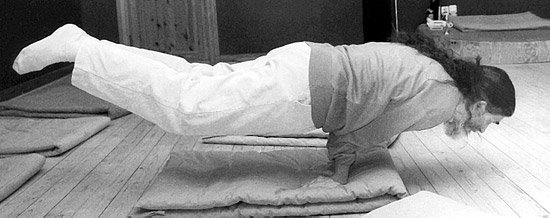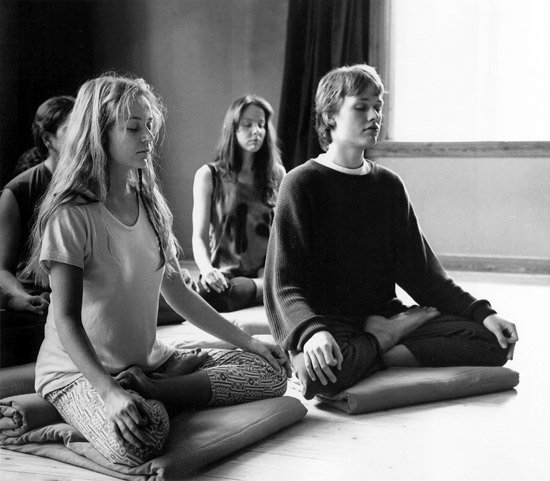Time for Learning... Time for Insight... Time for Teaching...
- a Silver Jubilee article by Swami Janakananda, written in 1995, revised 2009
Kriya Yoga can be compared to a fire that burns constantly during the meditation, cleansing the body and mind of limitations, inhibitions and confusion; whatever stands in the way of clarity, energy and balance and for which you have no use.
Consistency is necessary if you want to reach the essential. All roads lead to Rome, it is said. Yes, but you have to choose one road to get there. It is not knowledge of all kinds of methods and therapies that counts, but knowing yourself. What matters first and foremost is stability, investigation through one's meditation and gaining insight. I see how difficult it is for people who have tried all sorts of things to take the final steps and break through the wall isolating us from a deeper insight and an experience of a greater reality. They become rich with understanding, with opinions and theoretical knowledge, yes, even with certain experiences, but the eye of the needle has become too small for them to pass through.
Life is a Creative Process
When I planned these articles on Kriya Yoga, among other things, I wanted this third contribution to be about the conditions for teaching and learning Kriya Yoga, and about Kriya Yoga itself. However, I saw that I couldn't just write an article based on rules and facts that everybody should adhere to because I wrote it.
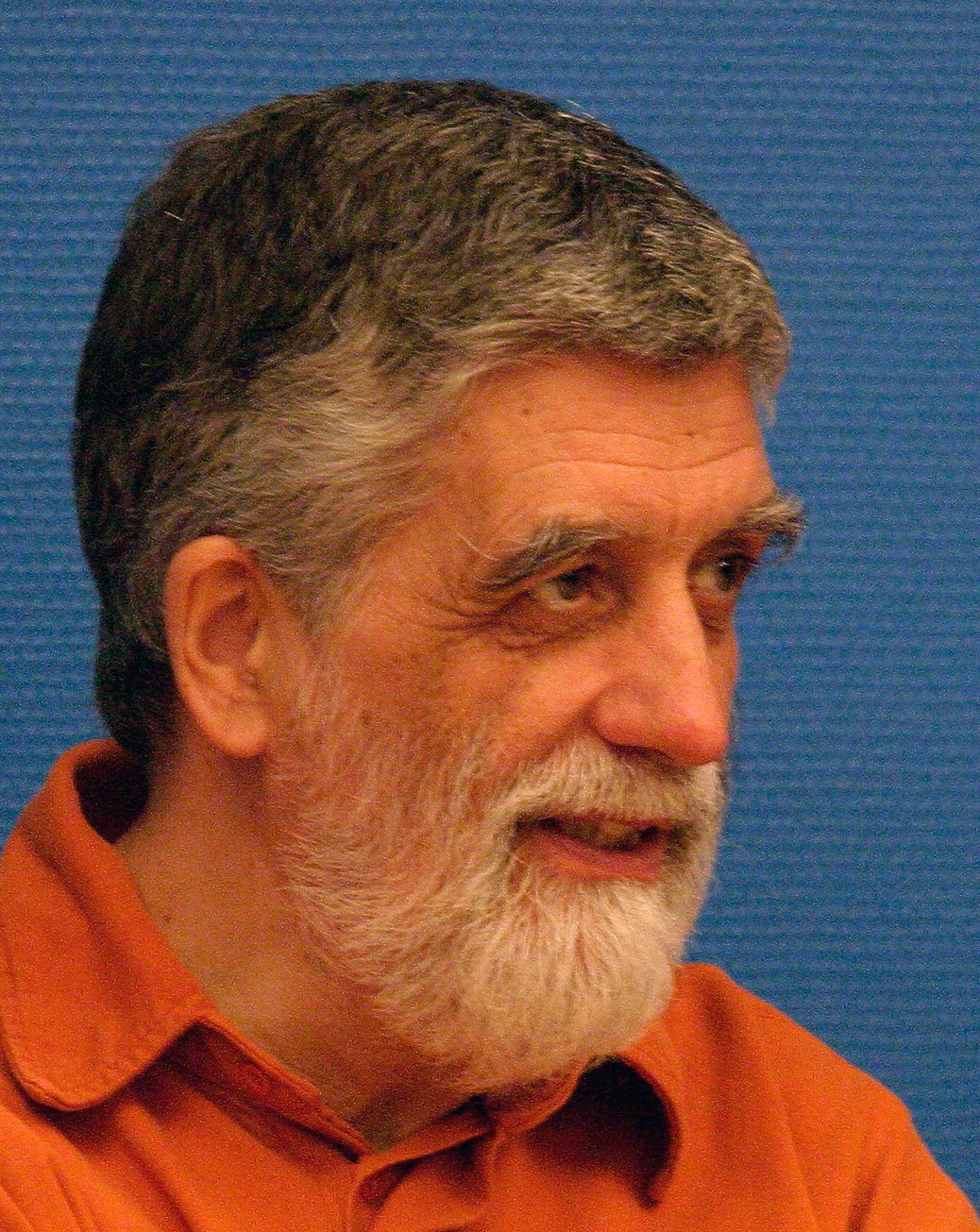
Therefore, I decided to write this third article as an account based on my own life and experiences. It is then up to the reader to decide whether what I say makes any sense, especially in relation to who teaches advanced yoga and how it is taught. Such teaching must have other conditions than ordinary weekly yoga and elementary meditation.
Here, I will write about what made me investigate and use exactly yoga, in light of my experience teaching it, and about the influence of yoga in my life – but, of course this text is about much more than that.
Creativity can have many expressions, particularly when it is about human evolution and one's insight into oneself. And when I describe my life in relation to yoga and my 'truth', then I must also accept others' truths - the life they lead, their background and the experiences they have had. Still, I do not wish to be gentle on anyone who is trying to have an easy job of teaching and, in so doing, spoil something unbelievably valuable for all those who are searching for real tools on the path of self realisation.
For the mystic, all options are open, also those which he does not know himself, but which are possible for others. Nothing is final or permanent, the mystic wishes to discover life anew every day. Therefore, he attains the unattainable – the impossible – that which the materialist thinks is delusion or wrong because it is not described, or is described differently in his textbooks.
Indeed, life is a creative process.
My background
Yoga in my Life
How did I come to use yoga in my life? What impulses gave me the inspiration? Basically, I find it difficult to separate life into the spiritual and the profane, into play and work, into everyday life and celebration. I do not believe that all our endeavours in life are to survive, but that life is a journey of discovery, where everything belongs and has meaning. All we need is to be sufficiently awake to realise it.
Still, I use these words:
- spiritual, to be in contact with the whole of yourself, or to be on your way towards a greater consciousness;
- psychic, to be aware of the processes in us that we are normally unaware of and, amongst other things, include energy as an overriding principle (that is the foundation of life, but which we are often completely ignorant of); and energy, as a field in and around our body, and as flows that we can learn to direct to change our state or heal ourselves or others; and
- chakras, as connecting links between body, energy, feelings and thoughts – our psychic senses.
Are we today so estranged from the spiritual reality of which we are a part (apparently without knowing it), that we must believe in mythological and limited descriptions of this reality? Descriptions that have nothing to do with us being part of consciousness. Must we base our beliefs solely on other people's range of vision, sometimes even under force or pressure, for example from a church and a society that does not want the individual to make his or her own explorations? Why? As children, we know that we are part of something greater, greater than that picture which upbringing and education later give us. As children, we take this greater reality for granted.
The yoga I know is principally based upon people doing something – they receive certain 'keys', they learn to use methods that create balance in body and mind and expand consciousness – so they themselves can feel a result. Yoga should not give you a ready-made attitude to life, but should make it possible for you to go in the direction you want and thereby become one with your life.
Naturally, when one has to discriminate between dreams, expectations, wishes and worries on the one hand, and experiences of an altered consciousness, with greater clarity and more energy on the other, the question then arises as to what is real and what is illusion. After all, a whole culture can live on illusions and psychoses; as it happened in periods of European history when people were burnt as witches and heretics for having another understanding of life, different from that of the religious and political rulers and the common superstition.
The ability to discriminate is therefore most important in spiritual yoga – every day, the individual must be trained in especially that ability – with the tradition, the personal teacher and even science as helpers.
Near Death
I got the idea to write this article partly as an autobiography, after having given an interview with Danish Radio P1, in Autumn 1993, in the programme Sunday morning, the programme about ourselves and what we believe in. I will begin by quoting from that:
Anders Laugesen: That source, which you have sought and presumably also found, this has some connection with yoga...?
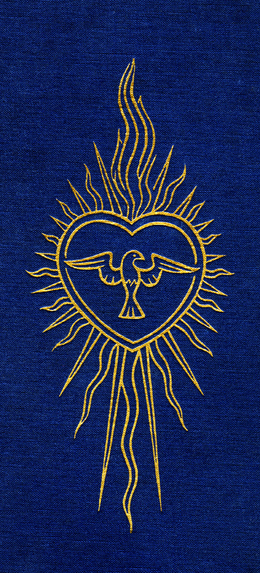
Swami Janakananda: Yes, you could say that, even though yoga in itself is only a tool. The reason why I felt attracted especially to yoga is probably found early in my life, yes, maybe even before life. It also springs from some thinking I have done, some experiences I have had, memories or whatever you call them. Something that suggests to myself why I went in this direction.
When I was 8 years old, I learned a yoga exercise where one has to lie completely still on the back. I was a nervous child, and to lie completely still for a quarter of an hour – not in bed, but on the living room floor, wasn't so easy. I was not to fall asleep, nor do anything else. At first, I couldn't understand the meaning of this. I lay there and looked around. But then, when I had been lying there for a while, I closed my eyes and began to realise what a revolution it was, just to lie and be still. My senses opened and the more I used the exercise, the more aware I became and the more I calmed down.
This is an exercise that I still use and teach others with great enthusiasm.
Anders Laugesen: Were your parents interested in Asian mysticism and yoga?
Swami Janakananda: No, not at all, but they were both devout Christians. And there was an incident early in my life that possibly made them even more so.
My mother was a nurse, and very active within the Methodist Church where she did social work trying to help people who had gone astray and were in social distress. I don't know whether my father was especially religious when she met him. Something happened to him in those years before I came along, where he incidentally joined a church other than that of my mother. I have often looked back on this with a smile, as I experienced a very great tolerance in my home – especially between my parents' different churches. One was the Methodist Church and the other, the Apostolic Church. The Methodist Church was cosy and safe, it was the Jerusalem Church in Copenhagen. We went there especially at Christmas, Easter and so on. But on ordinary Sundays, we would attend the large grey wooden building which at that time was at Østerbro in Copenhagen. That was the stronghold of the Apostolic Church, where my father was an Elder. It was an entertaining church, with a large stringed orchestra and choir that really went for it, a large baptismal font, or rather a little swimming pool, where people were baptised in white robes and white socks. My mother and I always sat right next to the font and got a few splashes into the bargain. It was a strong experience to attend church on Sunday morning – until I grew up and started resisting, as one does... They prayed very loudly and spoke in tongues all at once, and they often stood up and raised their arms in the air. Interesting foreigners from other countries often came to visit and were interpreted from the pulpit. All that was exciting ...
Anders Laugesen: Was it rebellion against your father and mother that you didn't choose to work in an ecclesiastical environment ...
Swami Janakananda: It started a little earlier than the typical teenage rebellion, and I don't think that at the time it was directed towards my parents, but rather was a stance against what I saw and experienced. I think I began to resist already at the age of 10 or 11. We moved around a lot also. For some years, I went to boarding school and saw things from a distance. But let me begin earlier.
You said you wanted to talk about reincarnation today, but I had an experience of a slightly different kind when I was two years old. It made a great impression on everyone.
I was dying. The doctor had actually given up on me. He had gone home. I lay there hovering between life and death – I was probably close to crossing the threshold of death. I had an experience, which I later had confirmed in various literature. I saw a being of light standing in front of me. It was simply made of light, and there was no doubt that it was a being. When I look back, I sensed it as if it were in the room where I lay – now it is so long ago that I don't remember whether I was in the body or somewhere else, but that's how I remember it anyway. When I spoke about it later, my parents thought it was an angel – it was interpreted immediately.
I don't know how this has influenced the rest of my life. People who have experienced this as adults, can notice a change in their attitude to life, but I was only between two and three years old.
Shortly before my condition worsened, I asked my parents: "But, why don't you pray?!" – Two years old, how could I have thought of that? Can a child just say something like that, in complete seriousness, to his despairing parents? Or does one bring something with oneself into life? I said: "Pray for me!" – and so they did. They were deeply shocked, I know that. All the Elders in the Apostolic Church interceded for me, and my mother prayed. And she phoned the priest at the Methodist Church, and he prayed and I don't know who else prayed. I wasn't very old so it's just what I've been told.
After the experience with the luminous being, I became conscious again. Immediately, I asked for some milk, and was given a glass, despite the doctor's order that milk was the one thing I was not allowed to have, perhaps to avoid the formation of mucus in the respiratory passages. Then, my mother phoned the doctor and told him: "Now the boy is sitting up in bed, drinking milk." He came as fast as possible to give her some sedatives. He figured I was dead and that my mother had begun to imagine things. But I was actually awake and well when he came, and he was very surprised.
I am in no doubt about the power of prayer, but I do not consider myself religious...
So much for the interview.
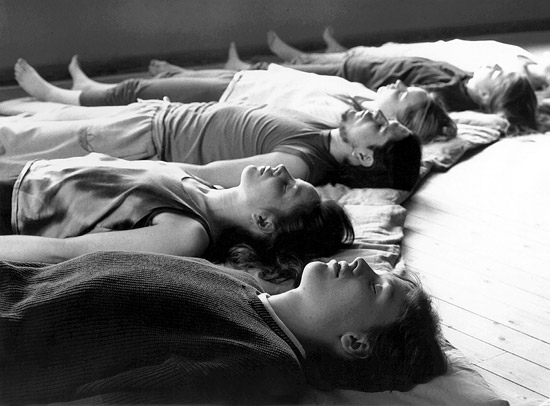
A luminous being actually appeared a few times in my early childhood. The last time was when I attended a holiday camp run by the Apostolic Church, The King Camp at Sejerø Bay. This incident was probably the beginning of the end of my childhood faith. I saw the luminous being again one evening, standing at the foot of my bed. Not only that, other children in the dormitory saw it too, and it caused quite a stir. The reason for my disassociation from the church was that this was exploited by the adults to create a religious fervour. The next day, we children were told that "all except one had been redeemed" as a result of that incident. Of course, no one dared to confess that they were the one who hadn't been redeemed. I didn't know of the word manipulation as yet, but there I was exposed to it.
My first Experiences of Silence
Silence and stillness, (mauna), is a part of the practice of yoga – and an important part of the fine tuning of the mind, so that it can learn or perceive Kriya Yoga in the best possible way. I will cover this in the next article on Kriya Yoga, where I will also explain the importance of the length of the initiation period. When I was six years old, I didn't know anything about the silence in yoga. Nevertheless, I had some experiences of silence which I still remember clearly.
The most important was a way to be silent that I began to appreciate in those years. It was the twilight hour, a quiet hour observed late in the afternoon, as the sun was setting. Sitting completely still in the living room together with other members of the family, and sensing how darkness settles, was my first experience of a state of peace that came very close to meditation. I, together with others, have described this in the article The Twilight Hour – A Time to Be, both the way it was (and still is) practised in our culture and as a supplementary knowledge of this phenomenon in the yoga tradition.
The other experience is maybe just a curiosity for the reader, but for me this silence made an indelible impression. It must have been the first year after the Second World War, on April 9th, the day when we remembered the Nazi invasion of Denmark. Everyone in Denmark commemorated this day with two minutes of silence at noon. All traffic stopped in Copenhagen – trams, the few cars there were in use at that time, horse carts and bicycles. People came out of their houses well in advance, stopped talking and went to the main street nearby. Together, we stood completely still on the pavements. For a child, living very much in the present, two minutes are long and full of happenings, and I realised that silence is a valuable act and a powerful means of expression.
When the silence had descended over the entire country, then something happened that made one become even more aware of the total stillness. A coachman suddenly lost control of his horses. They were scared by the unusual silence and bolted. They ran right past my mother and me, past the terminus of tram line 14 and along Peter Bang's Avenue. The only thing to be heard in the whole city were the horse hooves and the wheels rumbling on the cobblestones – and I saw a completely overwhelmed coachman on the driver's box. He probably wished himself far away.
The third kind of silence I have already mentioned – that was the silence and stillness I experienced when I lay completely still on the back in the living room and came into contact with my being.
Authority, Your Own or Others?
I did not know
I learnt early on that lack of knowledge of the law (also the unwritten) is not a valid excuse for breaking it. As one grows up, one gradually conforms to society or to those one knows, family, playmates, etc.
One cannot know beforehand how to behave. This is learnt through upbringing.
If one breaks unwritten rules, even those one does not know, then one is sentenced anyway – unless one is sure of oneself.
I did as I was told
I was in the school yard of the Søndermark School, one day right after school in 1951.
One of the teachers, on playground duty, had asked me earlier in the day to let down the tyres of the bicycles found outside the bike stand and leaning against the trees in the school yard. So I did as I was told.
And now they stood and waited for me by their bicycles. The teacher did not get a thrashing, but I did. I was really boxed around by those bigger and older than myself, and whose tyres I had deflated. Hanne, the blond girl from my class stood and watched while I lay by the bike stands, holding up my arm in order not to receive any more blows to the head.
I did not know that I should not do as the teacher had asked me, but I was about to learn now. I learnt to see the task I had been told to do, and had also done, from a new angle.
"You could have just pretended to do it. You could have bent down and said pssst with your mouth near the valve."
I wonder whether it was the same day and for the same reason that, during a break, I had the whole school after me, whistling and shouting "boo! boo! boo!" in unison – all 300 children. A teacher came towards me and asked what was wrong. "Nothing, " I said as I ran past him.
Well, at least I got Hanne's sympathy out of it. We were the last to leave the bicycle stands and the school yard. Very much in love, we rode our bicycles home from school, holding hands.
A Teenager's Thoughts and Wishes on Telepathy
When I was a teenager, I imagined how it would be when all people could read each other's thoughts and emotions. I expected it was something we all would attain.
I could not see the wood for the trees.
I was fascinated by the thought and, at the same time, I feared it. I fantasized how others would react to what I was thinking, or rather how I would feel about having my innermost thoughts revealed.
But why first as a teenager? Well, small children do not bother with thoughts in that way, they have not been hurt yet. Fear has not yet made them form rigid ideas about life, they have not yet learnt to take credit for what happens. Maybe children take it for granted that we all know everything. A child does not understand that adults are affected when he/she expresses what is in the air...
Imagine if others knew what I was thinking:
– All the 'flippy' thoughts a teenager has on the way to the adult universe.
– All the reactions that arise when one goes from one age group to another. Values that no longer hold, because experience grows and tells you that there are also other ways to see things.
– All my 'own' desires and longings.
It would be embarrassing if everyone could see what I was thinking. Maybe in my thoughts I would reveal something I had done, or wanted to do. Or things I cannot, or dare not, tell people but deep inside dream about telling. They would just be able to read in me: My fear, my longings about sex, romance and excitement, my love!
It would be unbearable, I thought. And I imagined how one must learn to control one's thoughts. I imagined, mistakenly, that this was what the yogis did. No one should see what I think. All the same, as much as I feared it, I wished for it and expected it to happen; that all of us, little by little, would become telepaths. So that we would not need to hide anything from each other and, therefore, would not need to feel fear or insecurity towards each other.
At that time, I did not know what I know today. I did not know that almost all people identify themselves with all thoughts that appear in their minds. They make the thoughts their own and isolate themselves behind pride, guilt or embarrassment. Rather than hide something from others, they hide things from themselves. Instead of experiencing the thoughts that appear in the mind as something just going by of their own accord – as thoughts that are connected to situations, habits and learned or programmed ways of reacting – they identify with them. And the very identification, makes them push the thoughts aside.
I did not know that certain thoughts are utterly basic reactions to life, and that they keep coming up because we never stop clinging to them or fearing them. And that real telepathy is impossible under such circumstances.
Very few people (whom we can call yogis) do not bother why thoughts are there or from where they come. Basically, they look at them as just thoughts.
Thoughts are around and therefore they also pass through my head. If I allow thoughts and emotions to pass and just look on, then by and by they cease to return. This, I learned through meditation.
After all, one does not have to follow all the whims that pass through one's mind, or all the dreams one dreams, all that one hears in the mind.
There is telepathy and telepathy. Today I do not 'flip' if somebody nearby expresses the same thoughts I just had, or if somebody steals 'my' ideas, before I have shared them with others.
Maybe you think that if you cling to your tensions, they will not affect others, but it is quite the opposite. If you relax and stop hanging on to what happens in the mind, then there is a chance that you in that way help others to do the same. But that does not give you the right to accuse others of blocking energy. If you are blocked, then it is your problem. You cannot run away from it by making anyone else the scapegoat. And conversely, you are not responsible for how others feel about themselves. But you can help them by being yourself.
Liberation from the Years of School and Apprenticeship
It is not my intention to write a complete autobiography, with all the joys and sorrows, emotional involvement and torments that life is full of. And even in regard to yoga, I must limit myself to a few things that led up to what I chose, to Kriya Yoga and what I do today.
In the following years, from when I was fourteen to twenty-one, I managed to be a carpenter's apprentice for almost four years; attended a residential technical college one winter; and lived for three years abroad, where, among other things, I worked at a saw-mill in Sweden, at the harbour in Bremen, and eventually went to London. There, I attended a language school for a large part of the time, and almost every evening learnt to draw at St Martin's School of Art in Soho. Finally, I worked for a few months at the east London docks.
The school years, and especially the period of apprenticeship, had had its share of humiliations and limitations. Now, I had to become independent of those influences and see through my complexes. I received great help from my discovery of literature. The first two books I read after boy's books were East of Eden by Steinbeck and A Fugitive Crosses His Tracks by Aksel Sandemose. Both deal with the crisis in a young person's life, when he must liberate himself in regard to family and society.
The Law of Jante is rather well-known in Scandinavia today, but at the time it was a revelation to read about Aksel Sandemose's Espen and his struggle. The Law of Jante involves the mutually oppressive mechanisms in a society that is closed by convention. You must not stick your head out and create your own life, for then you'll get it in the neck. Because:
1. You shall not think you are somebody.
2. You shall not think you are equal to us.
3. You shall not think you are smarter than us.
4. You shall not believe you are better than us.
5. You shall not think you know more than us.
6. You shall not think you are more than us.
7. You shall not think you are worth anything.
8. You shall not laugh at us.
9. You shall not think anybody cares about you.
10. You shall not think you can teach us anything.
And last, but not least, The Criminal Law of Jante, which is also very effective for keeping a person restrained from taking initiatives: We know something about you.
And what they don't know, is fabricated.
Youth
One might well ask: What has The Law of Jante to do with yoga? Well, if one sees yoga as a kind of gymnastics, then perhaps there is no connection. However, for me everything is part of a larger process, which makes me conscious and sensitive in relation to life, myself and others – and that is also what yoga is about.
I was not yet aware, however, of what I was seeking. I still wonder why my interest turned especially to yoga. I hardly knew what it was, and I also did not know that the exercises I learnt as an 8 year old were yoga; they were just some exercises.
Was I carrying the seed of yoga within me before I was born? Perhaps. At any rate I carried the seed of spiritual growth for my journey through life.
I remember how, with great interest, I got into the weekly magazines of the 50s, when on a rare occasion I found something about yoga; just as Gandhi and his life had caught my attention:
"True morality consists, not in following the beaten track, but in finding out the true path for ourselves and fearlessly follow it."
(Gandhi, All Men Are Brothers)
I spent the winter of 1957-58, at Ollerup Technical College. It unfolded a completely new perspective after four years as a carpenter's apprentice. Inspiration came, at first, from a good Danish teacher, and then from all the interesting people who came to give lectures.
One of the lecturers told us that meditation gives the ability to live in the midst of life's bustle – and be yourself. Not buried in your own thoughts but resting in yourself, acting freely from your own centre. What he said captivated me so much that I never forgot it – I quoted it in my book, Yoga, Tantra and Meditation in Daily Life:
"I heard about a man who had a well-run shop, a wife and a lot of screaming children, with the shop opening on to a street in the noisiest, busiest part of town. Yet that man could cut off at any time; wherever he was, he shut his eyes and entered a deep rest within himself. And when he reopened his eyes after any length of time, he was refreshed."
After Ollerup, I went to Sweden to work at Sparreholm Saw Mill, in Södermanland. For a few months, I worked on the sorting bridge. It had a large, very long 'table' on which the planks were conveyed. There were a few of us sorting the planks and placing them on the right wagons, according to dimensions and quality. I stood furthest down the bridge with five to six wagons to load. It could get very busy, and I had to get all the remaining boards on to the wagons before they reached the end of the table. Otherwise, they would pile up, and I would stop the whole sawing process.
However, it happened time and again that a nail in a log would stop the saw and then nothing came out to us for a while. It was during these breaks that I began to tilt the body up to the horizontal, while supporting myself on the edge of the table and balancing the body on the forearms. The Peacock (Mayurasana) is a very effective pose for the digestion and metabolism. Yes, it is even said that one can become immune to poisons if it is practised regularly. I was completely unaware of all this, though. I just felt like doing it and mastering it. I did not 'know' that I was doing yoga. At that time, I had never seen a book on yoga, but it did me good and I used it every day during those breaks. Was it something I 'remembered'?
At the end of the year, I attended the Technical Forest and Sawmill College in Härnösand, Sweden for three months. There, I began to seek a little more consciously – a quote from my diary:
"26/9/1958. Today, like so many other days, I have thought how I should go about building my knowledge of other people and how I can develop my thoughts – in other words, develop a little knowledge of human nature and teach myself to think as concentrated as possible.
I have talked myself into being interested in philosophy without actually knowing anything about philosophy, so I have begun to read a little and have thought about starting to explore psychology. Henry David Thoureau says in Walden, which I am presently reading, that you should not just study life, but also live it and take part in what you want to study. I quote:
'Which would have advanced the most at the end of a month, – the boy who had made his own jackknife from the ore which he had dug and smelted, reading as much as would be necessary for this – or the boy who had attended the lectures on metallurgy at the Institute in the meanwhile, and had received a Rodgers penknife from his father? Which would be most likely to cut his fingers?...' "
At the time, I sought knowledge of others and not foremost of myself. That was my mistake and the reason why the psychology literature I had found did not satisfy me. All in all it was about judging others, instead of experiencing and gaining first hand knowledge. There was no guidance in how one could work with oneself, no wisdom.
From Härnösand, the journey went via Copenhagen at Christmas, to Bremen in Germany. Here I spent a year, working in the Industriehafen (The Industrial Harbour) in a large veneer yard. At the workplace in the harbour, I learnt many things from my older workmates, about their lives and what they had experienced during the second world war in the various countries where they were stationed. In my free time, however, I became very active in quite another world.
I came into contact with a large international group of young people. I plunged into modern literature, especially the German writers, such as Stefan Zweig, Max Frisch, Ingeborg Bachman, Wolfgang Borchert and Heinrich Böll, as well as Franz Kafka. I earnestly acquainted myself with classical music and, together with my friends, I joined in the cultural and night life of Bremen. One could say I had a thorough cultural expansion of consciousness, plus a little tennis as well!
I now lived in a completely new and freer part of my life and I felt very content with that. My literature teacher, Mr. Joneweit, at The German School of Commerce for Foreigners (which I attended the last three months of my stay in Germany) gave me the following poem, Stages, by Hermann Hesse. It has been with me ever since. It is originally published in the book The Glass Bead Game, as one of Magister Ludi Josef Knecht's, posthumous works:
"Stages
As every flower fades and as all youth
Departs, so life at every stage,
So every virtue, so our grasp of truth,
Blooms in its day and may not last forever.
Since life may summon us at every age
Be ready, heart, for parting, new endeavour,
Be ready bravely and without remorse
To find new light that old ties cannot give.
In all beginnings dwells a magic force
For guarding us and helping us to live.Serenely let us move to distant places
And let no sentiment of home detain us.
The Cosmic Spirit seeks not to restrain us
But lifts us stage by stage to wider spaces.
If we accept a home of our own making,
Familiar habit makes for indolence.
We must prepare for parting and leave-taking
Or else remain the slaves of permanence.Even the hour of our death may send
Us speeding on to fresh and newer spaces,
And life may summon us to newer races.
So be it, heart: bid farewell without end."
(Herman Hesse)
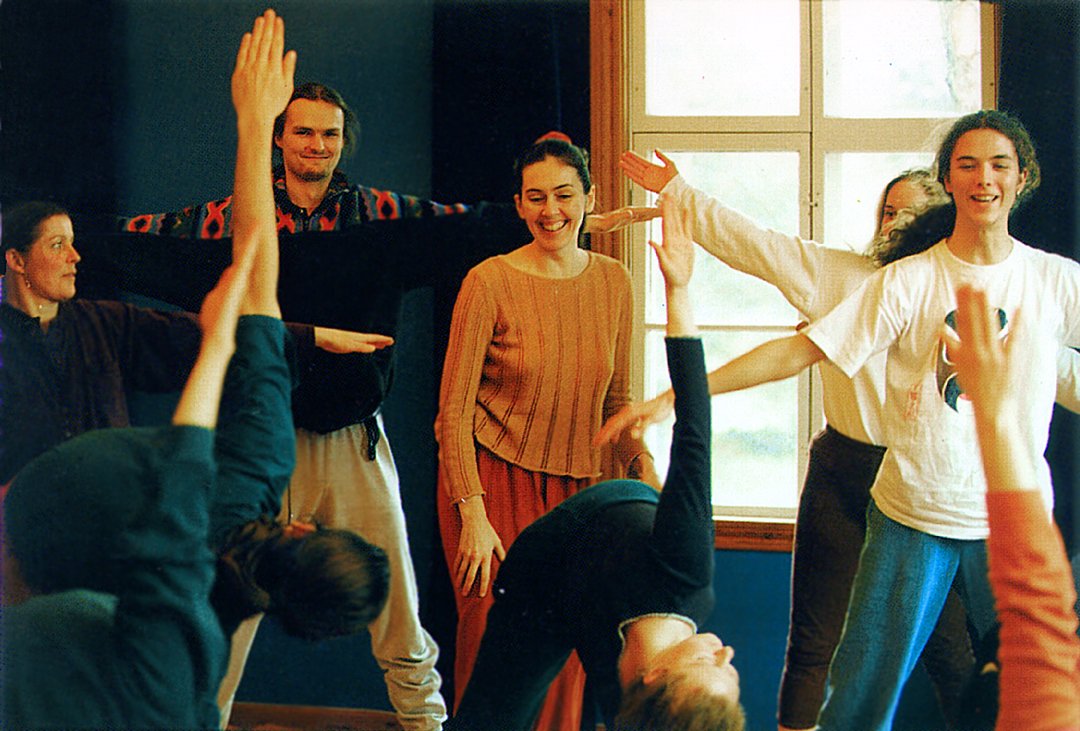
Yoga
My interest was not only about culture just for culture's sake, the more 'secret' or 'spiritual' search in my life still smouldered. Literature, my work and the people I knew satisfied some of my needs for knowledge of life, but not enough. One day, I bought a couple of books on yoga: Das Herzensgebet, Mystik und Yoga der Ostkirche, which was especially about the use of the Prayer of the Heart connected with the breath, as a form of meditation in the Russian Orthodox Church; and the book which made me start on the yoga exercises myself: Das Yoga-System der Gesundheit (The Yoga System of Health) by Yogi Vithaldas.
Not only did I begin to practise the classical yoga poses with great seriousness and some effort, I also imagined that I would be like the man pictured in the book. I stared intensely (Tratak) at this picture time and again, without knowing that this form of concentration on a wish can very well influence the direction life is taking.
But I also had other wishes and, in the years to follow, events would take me, via a university degree course, to the Faculty of History at the University of Copenhagen (studies which I spiced with English, a little philosophy, Sanskrit and the theory and history of films); on to the theatre, among other things to modern pantomime; and that way back to yoga. I was now going to learn to use yoga in quite another robust and sober way.
During my stay in Germany, I was apparently more interested in developing my concentration and other capacities. Just like the concept of key-energy, as described by Yogi Vithaldas, fascinated me – or was it more than that, a notion of something that reached further...?
The following year, I lived in England where, besides working and attending The Pitman School of English, I continued my journey of discovery into European culture. I was now also into the theatre – those were the times of Arnold Wesker, Harold Pinter and John Osborne (who started it all with the play Look Back in Anger). Additionally, I was part of London's art scene, not just as a passive spectator, but also as a student at St Martin's School of Art. That aspects of modern art influence our consciousness and our spiritual development, I didn't doubt for a moment. It is such a large and multifaceted topic, however, that I will have to return to it another time.
"Art, when it is genuine", I wrote in my diary, "is the mirror of consciousness, whether it be the inner or the outer world it reflects – and in his creative expression the artist becomes present, a presence that, if only for a moment, can be conveyed to the observer."
Much later, on a journey to Switzerland in the nineteen eighties, I saw an exhibition of Paul Klee's drawings. Paul Klee is an artist I have appreciated since my early youth, and from him I now got the 'mirror' confirmed:


"Some will not recognize the truthfulness of my mirror. Let them remember that I am not here to reflect the surface (that the photographic plate can do), but must penetrate inside. My mirror probes down to the heart. I write words on the forehead and around the corners of the mouth. My human faces are truer than the real ones." (Paul Klee )
The Pantomime
The wish or resolution I had made in Bremen gradually began to express itself. Even though I had almost forgotten my original intent, it was now going to be yoga all the way.
In that period, a strong belief in non-violence grew in my mind, inspired, above all, by Gandhi. And as I could no longer postpone my military service, I had to object to bearing arms. Consequently, I spent 22 months in a camp for conscientious objectors in Gribskov, a forest in North Sealand, Denmark, and at the naval museum at Kronborg Castle in Elsinore. It was to be a profitable period, where I came in contact with like-minded people and, through a teacher, also with people from the theatre. It quickly developed: I became a member of a professional pantomime group and later active in the Student Theatre in Copenhagen.
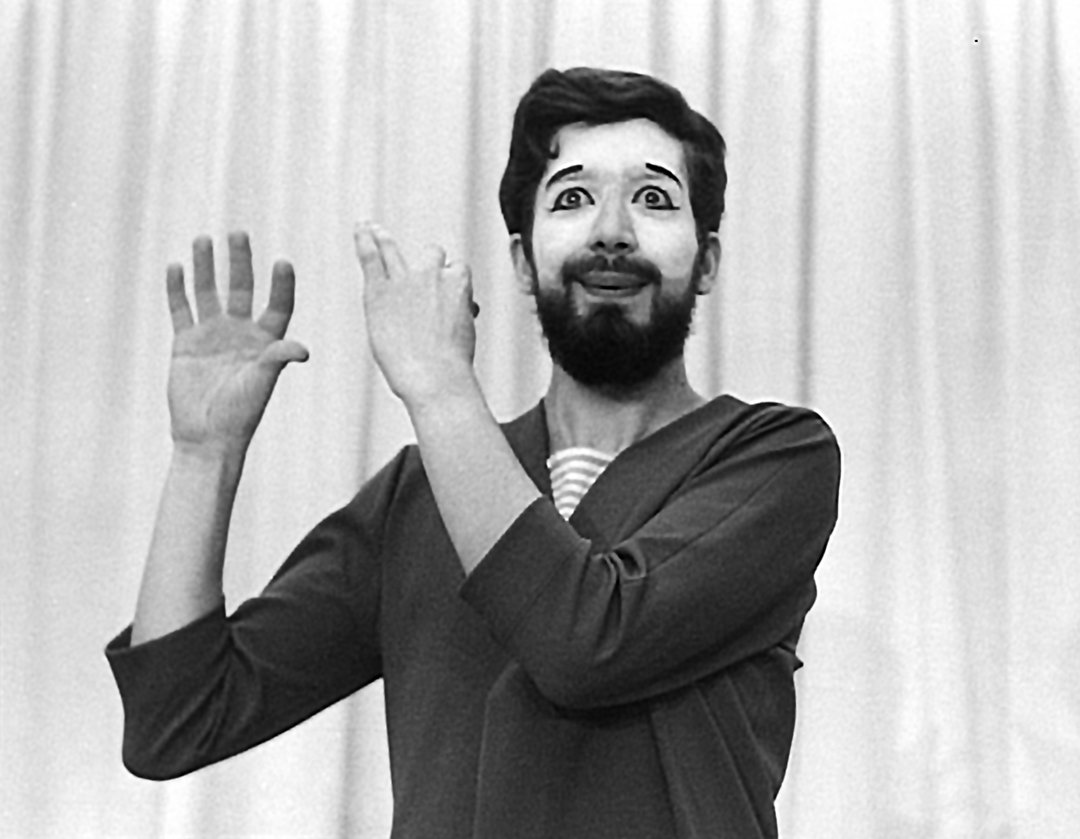
When I joined the pantomime group, it took up almost all of my time. A day would look like this: two to three hours of yoga exercises, then some hours of free improvisation with the pantomime body language, and finally certain disciplined classic tasks within the repertoire of the pantomime and the staging of plays.
Yoga was part of the warming up and had been part of the pantomime training from the Peking Opera via the French pantomimes Etienne Decroux, Jean-Louis Barrault and Marcel Marceau.
The purpose of yoga was to make the body supple and master its every movement. It turned out to be many of the same exercises that I later learned in India. But it involved more than that. A little revolution happened in my consciousness: I became awake, present and concentrated in quite a new way, and it became easier to express myself in art, both in painting and in the theatre.
Let me quote Jean Soubeyran from the book " The language without words":
"If an outsider should happen to come into the room where the dramatic improvisation takes place, he would be very surprised by the unusual picture confronting him. In almost total silence and immobility, a group of people are sitting in a semicircle. They watch a single student, who is sitting in front of them on a stool. He too is motionless, and his eyes are firmly focused on one point. For the uninitiated this may look like a spiritualistic meeting. It appears as if nothing at all is happening in this hall. But such a dense and sensitive atmosphere of work and concentration reigns here, that this stranger's intrusion would immediately disturb it.
For these almost motionless people work. After having trained their bodies for several hours in body technique, they now train that other part of the body, which is not carried by the legs, but by feelings and emotions."
The repertoire of pantomime is, to some extent, limited by its language and, therefore, has given rise to certain fields of expression or styles, which show themselves in plots that have cycles as form. One can choose a particular style as the basis for the play one wants to create. These styles illustrate fundamental attitudes or types of man.
You have the mime of the little man, mime de salon (the parlour mime or pantomime de salon) where one is preoccupied and involved in the small daily events, often presented in a comical way, as by Marcel Marceau's clown Bib.
There is the 'jock', the sportsman, physically exaggerated, the achiever, mime de sport , the mime of fight, but fight as a sport, carried out by one who rests in his body with calmness and fullness in every movement.
In mime de passion we meet the idealist, the passionate, who will do anything to reach his goal. It illustrates a fight different to the one of the sportsman, a performance where consciousness is not always present.
At last, if the goal has been lost or given up, mime de reve emerges , the mime of dream or rather of the dreamer. In its extreme, this dreaming becomes psychosis – where everything is based on illusion. The concrete act is no more, it has been given up and substituted by dreams and imagination. In this way, the difference between fantasies and real experiences is illustrated in pantomime. Or in the words of Jean-Louis Barraults:
"Man has at his disposal an imagination which transforms and even transmutes completely what is objective and what is subjective.
In certain critical situations of his struggle, man, seized with panic, superimposes over Reality an imaginary reality, which produces in him those extreme reactions we call emotions."
In Yoga, to see through this difference, time and again one may have to walk alone, but preferably, and at least in the beginning, with the help of a teacher or guru. It can be disastrous to underrate the importance of a guru here, for society possesses no fundamental knowledge of this – society lives on its own illusions. For the one who wants to go beyond the limitations of consciousness, the question of what is real and what is unreal is always burning.
Intense Yoga on My Own
At the time, I could not find anyone in Denmark who could teach me any yoga that I did not already know through the pantomime. I especially wanted to learn to use the Yogic Breathing Exercises (Pranayama in Sanskrit: to make conscious the dimension of energy), and Mudras ('attitudes' which harmonise the energy field of the body). So I had to turn to literature and follow the rules to the letter.
It was an exciting challenge. The book that I was now using had been written by Swami Narayanananda, an orthodox person who demanded a lot in regard to your way of living, but who also was exact enough in his instructions, so that I did not make any mistakes.
I found the more 'philosophical' and inspirational in Swami Yogananda's book. While reading Autobiography of a Yogi, I had experiences of different kriyas that I did not quite dare to believe. Even though Yogananda talks about Kriya Yoga all the time, he does not describe it directly. When I came to India and learned the great Kriya Yoga, I realised, only then, that I had already spontaneously experienced a couple of other kriyas.
From the middle of the sixties, my yoga practice consisted of yoga exercises in the morning and breathing exercises four times in twenty-four hours. For a couple of years, I had the opportunity to live in this way, while also directing a few plays at the theatre. The result was that I became aware of my psychic energy, as something that one can canalize and by which one can influence the physical and psychic state – besides keeping the inspiration flowing in my artistic expression.
But also, as a result of my capacity to concentrate intensely, I was able to receive what I came to consider a very special initiation:
The Vision

I came to a place that I can best describe as golden.
I sat in front of a semicircle, or as part of a circle of meditating individuals who seemed to consist of light.
I had the impression that I had been summoned there for a certain reason.
What I learned was not directly expressed in words, but communicated through experiences and states.
It resulted in giving my life an even more defined direction.
One must realise that what I learned here is partly secret, and also impossible to describe. I was made aware of an altered state of consciousness and a fundamental form of meditation. A connectedness with an energy, which at the same time is a process, or an ability to set such a process in motion. It has been with me ever since.
More and more, it has found expression in my teaching in later years. It is also secret in that, if I use it in my teaching, then not all students perceive all that happens – each person takes in that which he or she is ready to use. Behind it all, this ability helps me to remove tensions from participants, so they can remain more open and aware – and realise their own and Kriya Yoga's potential. It makes it easier to impart the insight that there is nothing you need to hang on to or figure out, that it is something you do and experience. And the process can be passed on to others, who in their turn can use it in their meditation and teaching.
I can call it Chit-Agni-Kriya or, in honour of the Siddhas that initiated me: Siddha Kriya.
I can give a hint of this Kriya by quoting Satprem in his book about Sri Aurobindo, so those who have sensed it will be able to recognise what I am writing about:
"We speak of the descending Force or the ascending Force or the internal force or of mental force, vital force, material force, but there are not so many different forces – there is but one Force in the world, a single unique current which passes through us and through all things and which puts on one substance or another according to the level of its action. Our electric current may light up a tabernacle or a tavern, a schoolroom, a refectory, and it continues to be the same current though it illumines different objects. So too, this Force or this Heat, agni, continues to be the same, whether it animates or illumines our inner retreat, our mental factory, our vital theatre or our material den; from level to level it wraps itself in a more or less intense light and more or less heavy vibrations – supramental, mental, vital, material – but it is this force which links up everything, animates everything; this, the fundamental substance of the universe: Consciousness-Force, Chit-Agni.
If it be true that consciousness is a force, inversely, force is consciousness and all the forces are conscious. The universal Force is a universal Consciousness. This is what the seeker discovers. When he has contacted this current of consciousness-force in himself..."
Satprem: Sri Aurobindo or the Adventure of Consciousness
Can a Westerner meet with an experience which many indigenous people have as part of their culture and in their spiritual life? Is it, or could it be, part of our possibilities? Can we oblige one of our own (C.G.Jung) when he proclaims that we must rediscover our soul? A soul that different cultures and indigenous people still have intact, whether they live on so-called called 'high' or 'low' material planes, some in tune with nature, others in overpopulated cities.
I usually say: can you imagine that your neighbour is in a state of Samadhi or Nirvana? Can you imagine that your teacher has reached that far, and that he knows what he talks about; and that at the same time, he remains a human being with emotions and thoughts, and with a body that he, like everyone else, must take good care of? And if you answer no, then I must tell you, that you have no perspective of your own possibilities – for what you are really saying, is that you are not allowed such things.
If one is denying such a possibility, then one also denies that on which many cultures base their mythologies, their psychic life, and their capacity to heal.
To me, this was a vision that does not occur every day, but perhaps only once in a lifetime. A vision which came unexpectedly, in such a way that I did not know anything about it in advance nor did I have any expectations of it. Moreover, I was not floating around in daydreams or thoughts of celestial things. My everyday state was clear and normal, strengthened by my yoga practice and my attitude to life.
But, of course, I was prepared in such a way that I could hold on to that tiny intense point of light, which appeared in my mind, long enough for it to change and take the form of a crystal, which again changed into a corridor that I flew through without thoughts of body or ideas of my own worth.
It was not an outer ritual, but an important inner event – an initiation. It may have been spontaneous, but it was the result of a long training in concentration and awareness. I had observed all conditions to be able to receive my vision. I lived alone and in continence. I kept a moderate diet and did intense yoga, so my body was light and pure. Therefore, I did not block the experience.
The knowledge and the capacities that it gave me have never left me.

There have been other visions since. I have described some of them in my book, Yoga, Tantra and Meditation in Daily Life, in the form of dreams. Others, I have never told about. For example, one I had on the roof of a house one night in Nagpur, during a tour of Northern India with my teacher. Yet another vision that became important for the direction my life was to take:
I had taught the whole day. Following Swamiji's diagnosis and instructions, I had been giving different people precisely the methods each had to use. I remember we had had a lot of melons at the evening meal, and I had stuffed myself with them. Afterwards, I sat down to meditate.
The vision started with a certain sign that I saw, a kind of code that told me that this was no ordinary dream or thought: A well-known Danish actor appears before me and asks whether it is really the theatre I want to devote my life to; whether I will be content with entertaining the bourgeoisie, evening after evening, with all kinds of plays, of which many would probably not be of my own choosing.
In spite of my love for the theatre, I later had to conclude that, as far as I was concerned, it had more meaning to give people an experience once or twice a week on a course, or on a short or long retreat. An experience of being able to relax with life, to find well-being; an experience the individual could use creatively in his life, and may even get him closer to himself.
But this all began with meeting my teacher and guru in Copenhagen.
Swami Satyananda in Copenhagen
One day, a close friend, the painter Knud Hvidberg, dropped by, wanting me to come along to a lecture on yoga. I resisted at first. There were so many lectures, and so many Indians and others travelling around... I had enough with my own yoga, I thought; it was intense and exciting. But Knud insisted and showed me a picture of Swami Satyananda from the newspaper. This made me change my mind. He seemed somehow familiar, and at the same time both intelligent and practical. Reluctantly, I went to the lecture.
Swami Satyananda gave two public lectures in Copenhagen. The first evening, among other things, he spoke about mantra and afterwards guided a meditation based on such a sound. On the second evening, the topic was: how to use a psychic symbol in meditation. What he said fell upon fertile soil with me. The effect it had in the meditation that followed convinced me of the value of his teaching. My psychic symbol appeared for the first time that evening in 1968 – and I still use it today.
"When one, through one's practice, has begun to come in contact with not only the subconscious, but also with the unconscious, with areas it is almost impossible to penetrate, then the psychic symbol appears as a life line..."
(Swami Satyananda)
When I also found a small, modest brochure on a chair at the rear of the hall, about some courses he was giving in Kriya Yoga that same year in India, then I had something to think about. Kriya Yoga was precisely the meditation I wanted to learn most of all! Did I really have to travel to India for it? Normally, I was of the opinion that things were always found close at hand and that the first was the best – but maybe...
After weeks of deliberation, I realised that this was indeed the first time I had an offer to learn Kriya Yoga. Together with Knud Hvidberg, I left Copenhagen by train via Stockholm and Helsinki to Moscow, then by plane, to Tashkent for a few days and then on to a weeks stay in Kabul, where we waited for the plane to get repaired which was to take us to Delhi.
From Delhi, the journey went on to Raigarh, to a yoga convention arranged by Swami Satyananda's International Yoga Fellowship Movement; and eventually to Monghyr, to my teacher's ashram and school.
Training in India
As it had been for Swami Satyananda, so it was for me. The training in the ashram did not have the objective of generating lots of fantastic experiences. On the contrary, one is to a certain degree sheltered from developing too many abilities, so as not to lose sight of the goal.
The period in the ashram should form a solid foundation for the self-expression, inwardly as well as outwardly. After learning Kriya Yoga, I remained in the ashram because I realised that I had found a teacher capable of helping me strengthen the bridge between the normal external life (with the vigour that is needed there), and the larger inner world that I was in the process of conquering.
Sannyasa
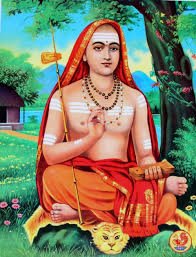
In the evening of Shivaratri, on the 15th of February, 1969, I took Sannyasa diksha. I became a Swami in the Saraswati branch of the Paramahamsa order, Dasanama Sannyasa's spiritual order, founded by Srimat Sankaracharya in the seventh century.
I was alone in being initiated that night. There was, apart from Swamiji and myself, just one other Swami present as a witness. Besides the initiation as a Swami, earlier initiations, that I had in the form of visions and experiences in meditation, were confirmed as very real and as something I could continue with. My teacher knew that yoga was not just a hobby for me, but that I needed a large degree of freedom and independence. He confirmed this with my initiation.
Let me quote a fragment of what Swami Satyananda has said and written about Sannyasa, to be a Swami, which means to master oneself:
"Sannyasa has arisen as a means to overcome and remove conditioning of the mind, false beliefs, dogmas, concepts, etc., which prevent the mind from functioning as a perfect instrument. It has been adopted by those people who wanted to free the mind of its bondage and thereby gain an insight into the deeper aspects of existence. It seems to have existed, though not under the specific name of sannyasa, since the dawn of history. It arose with the progressive development of society as a means to liberate the individual from the indoctrination inherent in the particular society in which he lived.
It is more than possible that 'primitive' man had no need for any form of sannyasa, for he was probably harmonious in his way of life, integrated with his deeper being and able to perfectly combine worldly and spiritual life...
Therefore, sannyasa arose simultaneously with the advent of social living as a means for man to re-integrate himself with his deeper nature. As social pressures become greater, so man becomes excessively ambitious, neurotic and egotistical. It is these and other discordant tendencies that imprison man and cause him to remain at, and function on, the surface layers of his being..."
Outwardly, it usually implies that one chooses to wear geru (an earthy ochre colour, close to orange). This choice or act expresses an attitude, and declares that one is part of a tradition. But geru is also worn because of its activating effect on the one who spends a lot of time in meditation, and in teaching meditation. It is a neutral clothing which, to a certain degree, prevents role-playing when one dresses according to different moods. It helps to turn one's back on materialism, by preventing one from dressing provocatively or flamboyantly – as yet another aid for stabilising the mind.
It can be mentioned as a curiosity, that many indigenous people dress alike in their tribes, or are naked, as they share everything and unreservedly help each other. In certain tribes in Africa, they even dress in the same geru that since the seventh century is part of the Swami tradition.
That the above quoted thoughts do not stir only in Swami Satyananda's mind, is shown by the following passage from Peter Nilson's book Home to Earth. It deals with the more material side of the problem:
"When we left the pastoral age [the food gatherer's age], we took the first step towards a catastrophe, we opened the door to the misfortune and misery which is today threatening our existence...
Farming, which no doubt gave us food and prosperity, can paradoxically also have made us starving and poor and led us towards our present epoch's population catastrophe. Rousseau would have recognised these thoughts, which in an unforeseen way illustrate the dilemma in everything we call 'development'."
On the inner sides of society's unconscious influence, professor Henri Laborit is expressing himself in the film, My Uncle From America, by Alain Resnais:
"The unconscious constitutes a fearsome instrument, not so much because of its repressed part, repressed because too painful to express and because the socio-cultural environment would have punished it; but on the contrary by what this very same socio-cultural environment allows and sometimes even rewards. All is put in the person's mind since early childhood, the individual being unconscious of it, and yet being led into action just by that part. It is this unconscious – different from the Freudian one – which is the most dangerous.
What we define as personality is a mush-mash of value judgements, prejudices, common truths becoming more rigid as the individual grows older and questions it less and less. Taking away but one stone from this building will be enough to see it crumble down. Then appears anxiety. To express itself, this anxiety will not stop for murder, on the level of the individual, nor for genocide or war on the level of social groups.
We are just starting to understand by which mechanism, how and why, levels of hierarchy and dominance have been established through all of history up to our present time.
We have to know the laws of gravity so as to travel to the moon. Knowing the laws does not imply that we are free of gravity. It just means that we can use them to do something else.
As long as we haven't publicised very widely, for the individuals of this planet, how their brain is functioning and how they use it, as long as we don't tell that its function has always been, up to now, to dominate others, there will be little chance for changes."
Ideals and Daily Life
I believe that ideals are quite dangerous for our existence, as they easily make us go to extremes, politically, spiritually and culturally, and consequently, miss the goal. They deprive us of our ability to appreciate what is happening in the situation we are in.
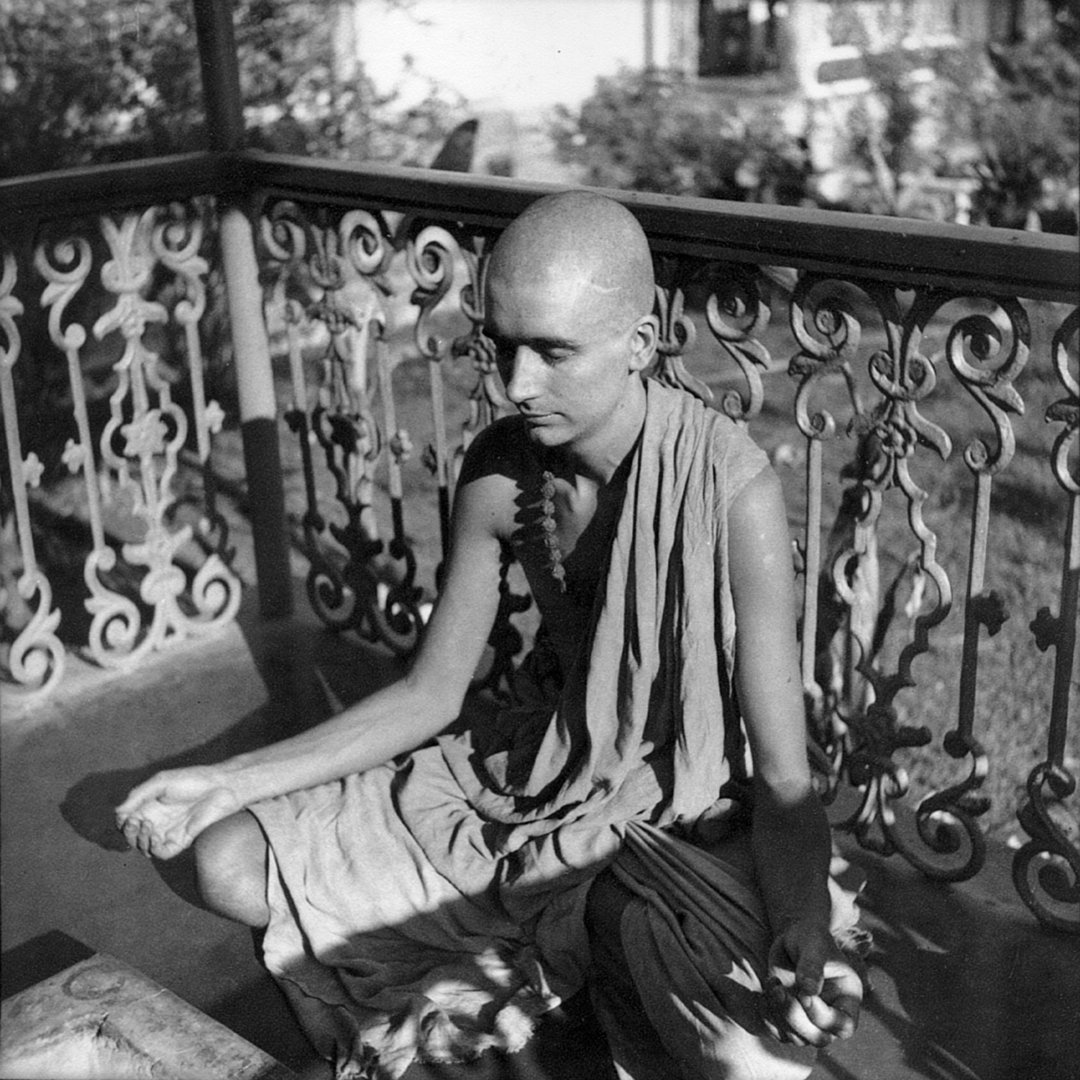
It is important, especially for the yogi, not to pull the wool over people's eyes; something that can develop into intolerance and sectarianism. There are no easy solutions for separating fantasy from real experiences. Everything, and certainly treading the spiritual path, requires our own commitment.
For our own sake, we must take heed of, for example, the stories about the Zen monks, who discover that it is in daily life that the miracle is found. That we should occupy ourselves with what lies directly before us: tasks, people close to us, and what we carry within us and wish to express.
Ideals easily create neuroses, as when one sees nothing but smiling people in advertisements for healing, religion, New Age, positive thinking, etc. Where is the deeper earnestness, I am tempted to ask, and the knowledge that working with oneself implies that one undauntedly meets all aspects of one's mind and personality? Can one allow oneself to see and, more importantly, to feel these aspects – without it leading to self-indulgence? The teacher who has not permitted the crisis in him or herself, will have a tendency to suppress it in teaching situations by avoiding to let go. Stability, discipline and consistency are certainly called for, a choice one makes oneself, and a necessity if one does not want to get lost in one's own fantasies, or be restrained by others' thoughtlessness.
Furthermore, ideals create intolerance and hypocrisy. Is it not true that it is often demanded of our teachers to be pure saints who we can imitate or fantasise about? That they are not allowed to be ordinary people, capable of expressing sorrow, anger, childishness, pride, jealousy, disappointment or spontaneous joy – not to mention a sense of humour?
I am not implying that the teacher should be an inverted snob and try to be someone else other than he or she is – but there is no reason to be afraid of showing one's true colours. When we, within ourselves, know what is behind the mask, then we can also stand by what is natural. Once we have learnt that the mind and personality are tools for surviving in the physical dimension – a surface through which we communicate with the world around us – then we can fearlessly go deeper and become one with our whole being, our true identity.
The Tantric attitude helps here: by unhesitatingly remaining in the state we find ourselves in, the state can be made conscious and thereby exhausted. Here is a very old instruction:
"Lie down as dead. Enraged in wrath, stay so.
Or stare without moving an eyelash.
Or suck something and become the sucking"
(Vigyana Bhairava Tantra)
There are also what I would call escapist ideals. I have met people who dream of living in the primitive tribes found on the outskirts of civilisation, in the rain forests or deserts of Asia, Australia and South America or in the Arctic regions of northern Europe and in North America. Cultures that are unfortunately dying out. No doubt they represent values that we indeed have use for. But when they become an ideal for people who are unable to meet the challenges and undergo a process of liberation in daily life or the society they live in, then they have an excuse for dreaming instead of acting.
And isn't it there that you find many so-called teachers and movements: between ideals of the primitive society with tepees, and the super high technology society with spaceships – where people do not use money, where they communicate telepathically and move almost floatingly over the earth so as not to harm plant life? Such cultures are placed both in the past and the future, in Atlantis and Lemuria, in the Central American and Egyptian cultures, on other planets, and after an upheaval on our planet in a not too distant future. And what is worse, people are sitting waiting for spaceships, expecting them to come and save us from life on this globe!
Regardless of whether they are based on fact or not, such dreams and anxieties often justify:
- That we cannot make ourselves do what has to be done here and now in our time, in our cities, in our countries; and live this life and use the abilities that each has received, instead of dreaming.
- That we do not dare to receive a knowledge that enables us to disregard our limitations, instead of magnanimously passing those limitations on to others under the guise of wisdom, healing or religion.
- That we are not capable of taking life as it comes and deal with the tasks that lie at hand. Why must everything be looked upon as problems? Everything is part of life and life is an exciting challenge!
Those who have actually heard the message from the 'past', 'future' or the 'dream time' do not use it as an excuse to dream themselves away from the life they were born to, but throw themselves into a work to come in harmony again with themselves and nature, and then help others and the society they live in to do likewise. It happens without thought of comfort and not in a state of self-absorbed hypochondria. One contributes where it is most needed. Each according to his/her background and abilities.
Or said in the words of Walt Whitman in Song of the Open Road:
Henceforth I ask not good-fortune, I myself am good-fortune,
Henceforth I whimper no more, postpone no more, need nothing,
Done with indoor complaints, libraries, querulous criticisms,
Strong and content I travel the open road.The earth, that is sufficient,
I do not want the constellations any nearer,
I know they are very well where they are,
I know they suffice for those who belong to them.
The Force of Example
Personally, I don't think that the force of example is worth much for the one who really works with him/herself. It may be important for children to have a firm example in an adult, and stable guidance as a basis. An adult, however, who wants to discover more about life and his/her own depths, does not find it by copying other's lives – only by living his/her own. In this endeavour, one must be able to make adequate choices with regard to oneself and not decide from imitation or habitual norms.
However, discipline and other conditions should not be confused with ideals. In my opinion, one should be able to let oneself be initiated, dare accomplish what one really wants and overcome one's fear and, in this way, acquire useful knowledge. My collaboration with Swamiji, that he could tease me, test my pride or my fear, wake me up, give me tasks and, above all, that he could bring me down to earth when imagination ran away with me, had the result that I learned a potent, useful and, not least, deep-going yoga, giving me presence and willingness to act. On the other hand, the decisions I made, the conclusions I drew, my inner objectives, and the amount of perseverance I displayed, was up to me.
Not only for my own part, but also with students I have had over the years, have I seen the importance of periods to withdraw and gain perspective. There are, no doubt, people in society critical of such an act, perhaps because they fear that the illusions we grew up with, and which are partly unconscious, could be seen through. For me, however, it was necessary to see through them to become independent. It meant that I had to give up demanding anything in advance and dare to accept situations as they came. Thereby, with the help of yoga and meditation, and with my teacher's guidance, I began to discover the limiting attitudes and habits that had influenced my life. Through this process, I realised what true independence involves.
A quote from my diary, in India, 1969:
"Reaction and submission – to react against or to submit to – environment, conditions, etc., it is all the same, both are dependence.
To mature, to be able to regard everything equally – without comparing it to oneself – that is perhaps what between people is called brother- or friendship- or true social-mindedness, not blind following, not rebellion against others, but empathy."
That such an attitude can transform most situations, may be a secret to many. To dare living in accordance with this could very well reveal in oneself a fear of letting go.
As to being a yoga teacher, I do not believe one should struggle for power or compete in a reckless way. Instead, it is good that what one achieves is based on one's own merit, but with respect both for the tradition and for those from whom you learnt it. After all, it was not I who invented what I teach, but my teacher, and not him either, but his teacher, and not him either...
"Do not try to persuade the students that already go to other teachers, let the students come by themselves, when it gets about that your teaching is good. And if one day they don't come anymore, then that part of your karma is over",
Swamiji said to me in 1970, when I was on my way back to Scandinavia to teach.
In Tantra, it is said that even a dog can be your teacher – and at another time I shall take up the relationship between the expectations and ideals we have and the true wisdom of certain people, which far from resembles the current model we dream of finding in the yoga tradition or in modern movements. An initiation and the decision to live as a swami, for example, have to do with everyday life and normal communication with other people. At the same time, it involves consistency on another level that reaches far beyond what is taught in Sunday school, or what is contained in the soft, fluid New Age philosophy presently in vogue that pollutes some of the meditation methods that are being boosted these days. No, the meditation must be more cool and neutral. It should not create new fixations to cling to. You do not have to 'fill' the mind with anything.
It is about a goal that one does not want to miss, neither through idleness, romantic ideas nor fanaticism, and which has nothing to do with whatever time one happens to be living in.
After all, it is not just the laughing or crying personality that can be happy or full of sorrow, that feels attracted to or repulsed by what it meets in life, but also the deeper dimensions that reach beyond what is seen on the surface, beyond the states of body and mind that you know already. It is the whole of your being – which you can become one with.
"Any therapist who would lead others to psychic heights and depths must, himself, be able to attain these heights and depths of the psyche. Contemporary psychotherapists will have to begin by training themselves to ascend and descend through their own psyche and thereby experience the manifold components within man and the driving forces behind human life."
(Wolfgang Kretschmer, Meditative Techniques in Psychotherapy, referring to his colleague Desoille).
Ashram
In the ashram, the everyday life and the daily tasks (Karma Yoga) are essential. In everyday life, the residents keep a routine, and the transformation happens imperceptibly, naturally with the help of yoga and meditation and, in my experience, above all with Kriya Yoga.
While living in my teacher's ashram in Bihar, India, one day the conversation turned to the conditions for teaching Kriya Yoga. He said:
"Kriya Yoga should only be taught under ashram conditions. "
An ashram is a place where people live, and are continuously devoted to a Sadhana. Sadhana actually means "that which leads to the goal", and includes everything that awakens consciousness and keeps it awake. The ashram is a place where people do not pursue any other value than the spiritual, a place that makes it possible to take time to rediscover both mental and physical well-being. Such a place is built up gradually, with all the daily pursuits, with facilities for teaching, but most of all, with a core of people who are not just visiting, and who don't have other motives for being there than taking part in this work.
The ashram should provide an atmosphere of security and peace, so that students coming for a relatively short period, for example on the 3-month sadhana retreat, can devote themselves, undisturbed, to what they came for. They will then get support from the surroundings, without feeling that they get exploited economically or otherwise, such as what happens constantly in society.
But at the same time, the ashram should be full of challenges, both in terms of tasks and of opportunities for training and initiation. Here, it is not a question of striving for a 'certificate' one can flaunt. It is a way of living. I often heard my teacher say to those present:
"Think about what people normally pursue, how much time they spend on education and career, an education they can use for only a few decades out of life, and how little time they use for their spiritual development, a development they benefit from their whole life – and for more than that."
An ashram is traditionally led by one or more swamis. In such an ashram, Kriya Yoga can be taught if it is used daily by the permanent residents, so that everybody is intimately acquainted with what is being taught. The ashram and its residents must be able to convey an experience that reaches further than a mechanical or theoretical learning.
What I have experienced in an ashram, both the one I was in, in India, and the one that has come into existence here in Scandinavia, is that it is based on voluntary participation and motivation from the residents and from the students coming on courses. The aspirants can stay as long as they want, but while they are here, it is important that they do not forget the purpose of being here and that they want to participate in all activities – then indeed the desired effect can be reached.
"You cannot force anyone to be happy" said Swami Yogananda. Yes, isn't it odd? And neither can you force a flower to unfold. But one hopes it will, by supplying good conditions, enriching the soil, giving it light, air and water, as well as protecting it from negative influences during growth and maturation.
But of course, there is more to it than that, see On the path to a greater Awareness – about a text by Swami Satyananda: Chronology of a yogi.
Education, School and Ashram
I have called Scandinavian Yoga and Meditation School a school, because people should be able to come and go as they please, without further attachment than the teaching in which they participate. This is how it has functioned for the many years the school has existed.
I have, however, called the yoga teacher training an ashram. Formerly, in India, there was no question of a yoga teacher education. Education is a modern concept that is based largely on theory and learning in classrooms. In the tradition, however, yoga was learnt in everyday life – and so it was for a large part of my training with Swami Satyananda. Wisdom is acquired through the situations where you wake up and use your awareness and goodwill. This happens via a daily work so close to the teacher that at any time he or she can reflect when you forget yourself, and show you how to return to yourself – and this happens in a community with others who have the same goals. It takes place in the work, but also in practical and theoretical classes or during satsang with the teacher, and naturally through common and individual meditation.
In my opinion, life in an ashram should not be based on theoretical scholasticism, but on a constant vigilance – a training that, due to the nature of the ashram, happens largely by itself: it makes the participants both more robust and softer, giving inner strength and sensitivity towards others. One is both naked and resting in oneself.
However, the individual must him/herself make use of the situation, and choose how long he or she wants to stay (besides the minimal demands required for the formal education, first as yoga teacher and later as meditation teacher). Whether it works to be more or less in contact with an ashram does not only depend upon the teacher or the leader, or upon the ashram residents at that specific time, but upon oneself. The one who just sits in a corner and looks around with too much respect, or the one who only wishes to pick a quarrel, probably does not belong in an ashram.
The teacher is merely at the disposal of the one who wants to use him or her. Furthermore, the teacher or leader can, on equal terms with the others, take initiatives regarding the running of the school and tasks in the ashram. By virtue of experience, the person concerned will endeavour to impede lethargy and sleepiness, personally and in the group, probably more often than the beginner or someone who has forgotten the purpose of being in the ashram and just wants to be comfortable. Just as he or she will detect earlier than others if superficial attitudes are spreading, such as joviality where everything is laughed off (not to be confused with a sense of humour); or if people are constantly therapeutic with each other and suffocate one another with criticism or caring; or if exaggerated enthusiasm arises, for it may quickly burn out to nothing, or worse, turn into fanaticism or intolerance.
The fruits of the life in the ashram are individuals who are independent in relation to many of the influences that are around us; but also in relation to the fear and, in certain cases, the superstition that limits certain yoga teachers who have obtained a short, formal and theoretical education. Such yoga teachers have not undergone any initiation or test and thus have not really met themselves – which to my mind must be a prerequisite for a person who is going to guide others.
The creative person; the seeking, perceptive person, lives until he or she dies. No period in life involves waiting, each moment has its tasks and opportunities. But life, and life in the ashram, and your spiritual search, depend very much on your own initiative in the situation where you find yourself, and on your perseverance.
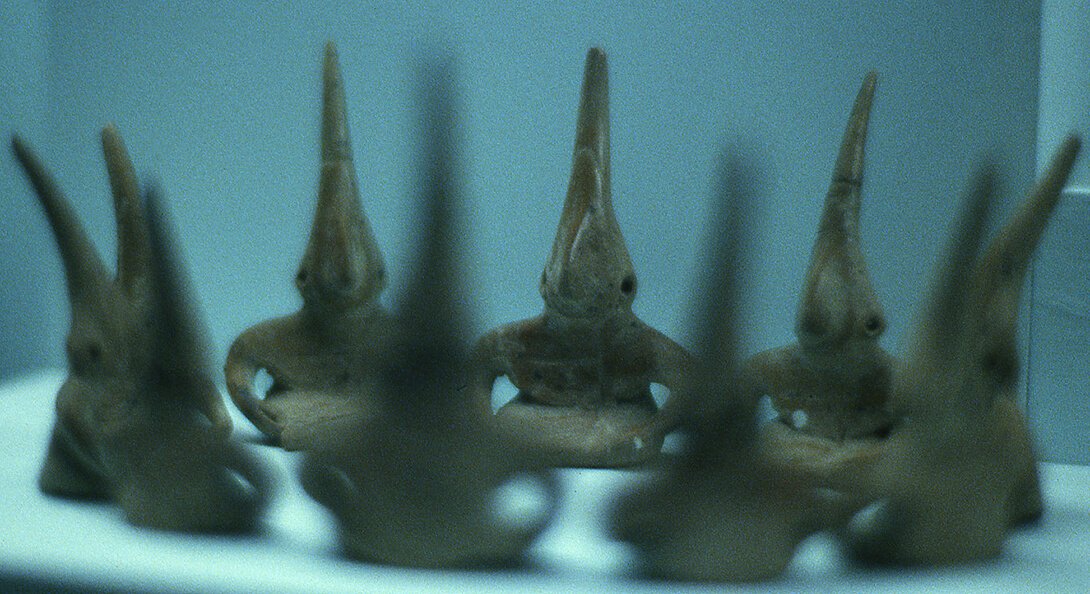
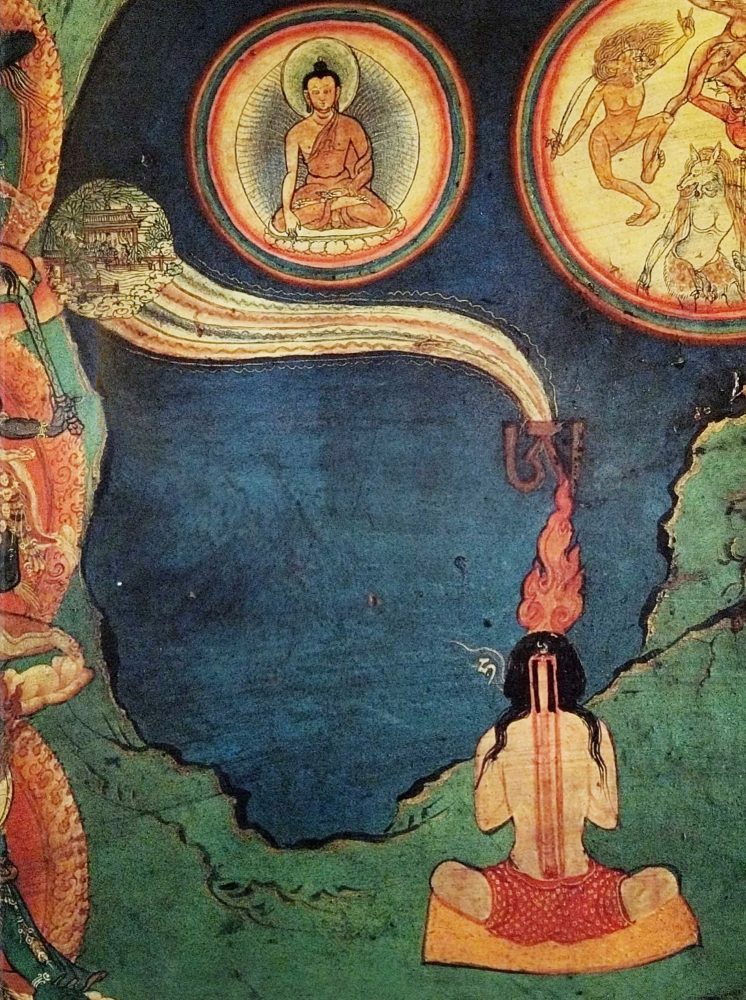
Sex or Celibacy
In the mid 70s, we experimented with the Tantric sexual rituals for a few weekends at our course center. It caused quite a stir and fuss. Christian fundamentalists tried to label us with their ideas of group sex, etc.
It made me consider whether, by occupying myself with these rituals, I was not losing what I value most in my teaching, which is meditation. Originally, I had included and described the sexual element of Tantra in my book to refute the idea (which certain orthodox yogis had tried to spread) that yoga required absolute chastity.
However, I will say in defence of celibacy that it has a great effect in relation to one's spiritual strength and determination, as long as one does not do it with fanaticism and turn "the lust of the flesh" into something sinful or dirty, in order to defend oneself against it.
If one cannot or does not want to live in brahmacharya (literally, "to be one with the whole – with the all," commonly interpreted as celibacy) for the whole of one's life, it is recommended to keep celibacy during the periods where one works intensely with oneself and/or goes through an initiation. Then there is a greater chance of a breakthrough to true calmness, insight and stability.
Continence, or a moderate or economical sex life, can bring about quite a different strength and invulnerability – compared to the perforated, depressed or emotionally irritable state that one is in, without knowing why, when maintaining an exaggerated or disharmonious sex life.
The Tradition

There is no doubt that a teacher, when he or she has finished the training, can grow and become unique in relation to his or her teacher – however, to teach from the tradition implies that a direct break with the teacher does not take place.
My relationship with Swami Satyananda has evolved from just being a pupil; to the closer relationship of being a disciple; to a period where I had to show what I stood for, each day – time in itself gave me no credit; to a friendship; to something more, based on great mutual respect for each other, on an experience of unity and on an acknowledgement of each other's differences. (See also: Namo Narayan – Swamiji!)
How does this relationship start? A short quotation from my diary in India:
The fear that exists of everything new,
can also emerge during learning, when ideas and expectations
mingle with understanding.The teacher must be able to take away fear from the pupil,
so that the pupil can experience and understand the new
without hindrance –
and in so doing, later meet and conquer fear on his own,
with greater wisdom and strength.
And another time, under different circumstances, I wrote:
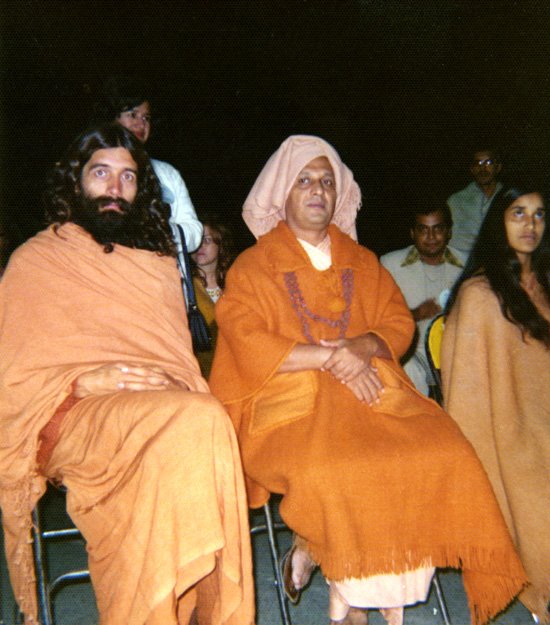
To slate your teacher,
in your thoughts or in front of others,
does not change reality, and
does not entitle you to take something,
to which you have no claim.
I cannot take credit for the yoga I teach, like Kriya Yoga; nor can my teacher Swami Satyananda – although, the way I see it, he has really shed light upon Kriya Yoga – and nor can his teacher Swami Sivananda, no matter how great pedagogues they were and how much they have brought forth from the tradition.
With this attitude, peace of mind is maintained, and one can teach without the fear that arises when one is assertive at the expense of others, or takes credit for something which cannot be owned, (or that one has 'stolen' without a proper preparation or training, in the sense that one reduces one's demands on oneself and on the conditions of teaching).
The pupil can, nevertheless, very well become an exceptionally good teacher.
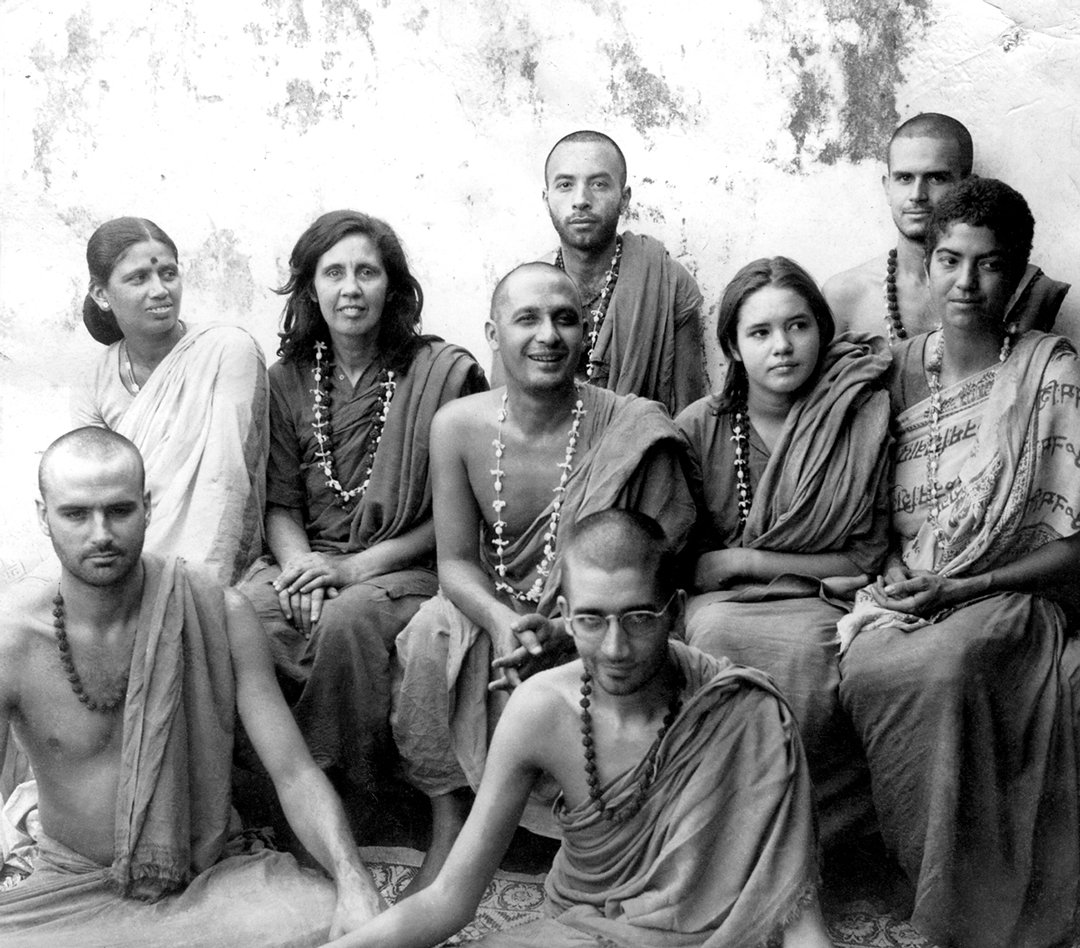
"The disciple may well be psychically higher developed than oneself",
Swami Satyananda said, one evening in Gondia, where we rested in between two of our functions, as guests of a private household.
But who can compare?
The answer came one day when he said to me:
"Have respect for where you are, and be who you are, then all thoughts of who is higher or lower, in front or behind, lose meaning. "
Liberation, when seen from this point of view, lies in being yourself – and, as I see it, in looking upon life as a gift and receiving this gift. Not what you are going to achieve tomorrow, or the unpleasant events that might come, but what happens now. This is where you really live the life that you, after all, have been given. Without fear of how others live and without the wish to live like others – thereby frustration and misery are avoided.
Concerning the teaching of Kriya Yoga, the task is entrusted to you, you are permitted, and you are prepared for it and tested – beyond what even a comprehensive yoga teacher education otherwise consists of. That is why, so far, it is only swamis who teach the tradition I have chosen to teach from.
"Earlier, Kriya Yoga was only for us, the swamis, it was our meditation. It was secret and we used it for our own sake. It was only passed on to the ones who had taken sannyasa." (Swami Satyananda)
This was a little about my life as a yogi, on the occasion of the School's silver jubilee – and about the conditions for teaching Kriya Yoga.
ॐ
In the following articles of this series, I will tell more about Kriya Yoga itself and about the conditions for learning it, for instance about the silence and why we keep at least 21 and preferably 33 days of unbroken silence during the initiation, see below.
This article, which was originally written in 1995, has been revised and expanded in the summer of 2010. The article is full of links. If you print it on paper or download the PDF version, the links will not show.
Here are all the articles of the series:
Kriya Yoga – A bridge between the inner and the outer world
Kriya Yoga – to the depth of your nature
On Sadhana – on cycles in healing and learning, and on keeping Silence during the initiation in Kriya Yoga
The Greenhouse, the Process and the Ritual – On initiating and being initiated into advanced Kriya Yoga
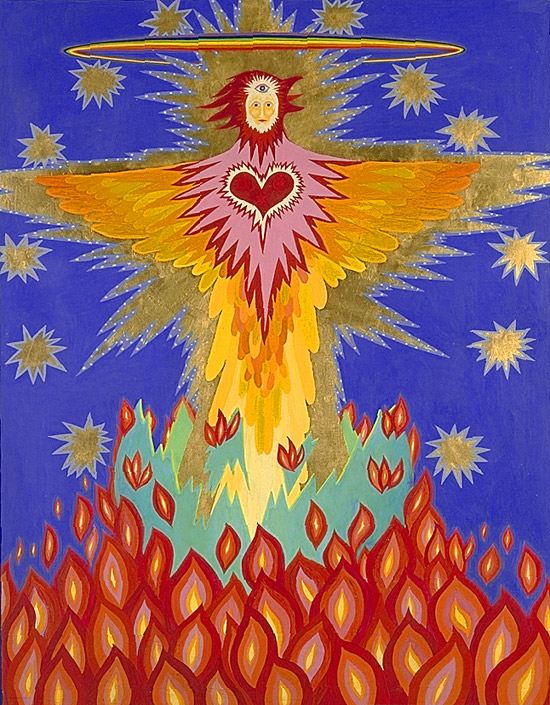
"Focus on fire rising through your form
from the toes up
until the body burns to ashes
but not you."
(Vigyana Bhairava Tantra)
>>> Go to The one month Kriya Yoga Retreat
References:
”Das Herzengebet, Mystik und Yoga der Ostkirche”, Otto Wilhelm Bart Verlag.
”A Fugitive Crosses His Tracks”, by Aksel Sandemose. First edition in English 1936. Translated by Eugene Gay-Tifft. Published by A.A. Knopf.
”All Men Are Brothers, (Autobiographical Reflections)” by Gandhi.
”The Glass Bead Game, (Magister Ludi)” A novel by Herman Hesse.
”Paul Klee, Handzeichnungen III, 1937-1940”, by Jürgen Glaesemer. Kunstmuseum Bern 1979, Paul Klee-Stiftung.
The Diaries ofPaul Klee, 1898-1918
”The Mime”, by Jean Dorcy, the chapter, ”The Tragic Mime”, by Jean Louis Barrault. Translated into English from French and published in 1961.
”Die wortlose Sprache – Lehrbuch der Pantomime”, by Jean Soubeyran. Friedrich Verlag, 1963. The original is French.
”The Sundance– He Who Was Born Twice, part 2 ”, by Derib . Published by Lombard.
”Sri Aurobindo or the Adventure of Consciousness”, by Satprem. Sri Aurobindo Ashram 1968.
”Sannyasa Tantra” by Swami Satyananda Saraswati. Bihar School of Yoga, Monghyr. Published in the nineteen seventies.
”Hem till jorden” (Returning home to earth) by Peter Nilson. Norstedts 1994.
”Mon Oncle D'Amerique”(My Uncle from America), a film by Alain Resnais, France 1980.
”Vigyana Bhairava Tantra" is a part of ”Zen Flesh, Zen Bones” by Paul Reps 1957. He called the text "Centering". It is the best rendering ever.
”Leaves of Grass”by Walt Whitman 1855.
”Meditative Techniques in Psychotherapy”, by Wolfgang Kretschmer, as published in ”Altered States of Consciousness” by Charles T. Tart, 1969.

